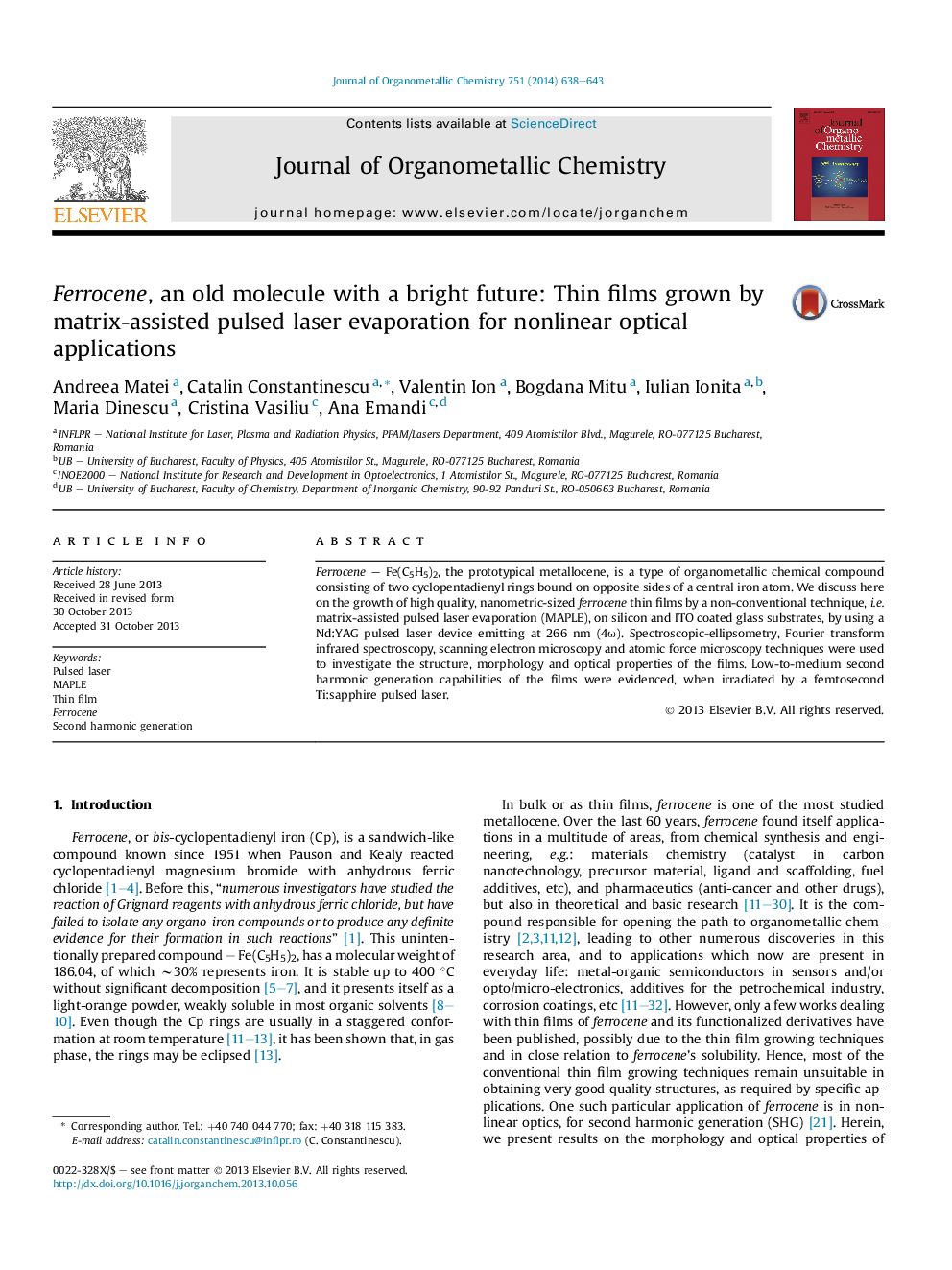| Article ID | Journal | Published Year | Pages | File Type |
|---|---|---|---|---|
| 1324323 | Journal of Organometallic Chemistry | 2014 | 6 Pages |
•Ferrocene thin films are grown on quartz and BK7 glass substrates, by MAPLE.•The structure, morphology and optical properties of the films, are discussed.•The second harmonic generation capabilities of the films are evidenced.•Nonlinear optics applications of the ferrocene thin films are discussed.
Ferrocene – Fe(C5H5)2, the prototypical metallocene, is a type of organometallic chemical compound consisting of two cyclopentadienyl rings bound on opposite sides of a central iron atom. We discuss here on the growth of high quality, nanometric-sized ferrocene thin films by a non-conventional technique, i.e. matrix-assisted pulsed laser evaporation (MAPLE), on silicon and ITO coated glass substrates, by using a Nd:YAG pulsed laser device emitting at 266 nm (4ω). Spectroscopic-ellipsometry, Fourier transform infrared spectroscopy, scanning electron microscopy and atomic force microscopy techniques were used to investigate the structure, morphology and optical properties of the films. Low-to-medium second harmonic generation capabilities of the films were evidenced, when irradiated by a femtosecond Ti:sapphire pulsed laser.
Graphical abstractHow to make high quality, nanometric-sized ferrocene thin films, by matrix-assisted pulsed laser deposition, for non-linear optical applications.Figure optionsDownload full-size imageDownload as PowerPoint slide
